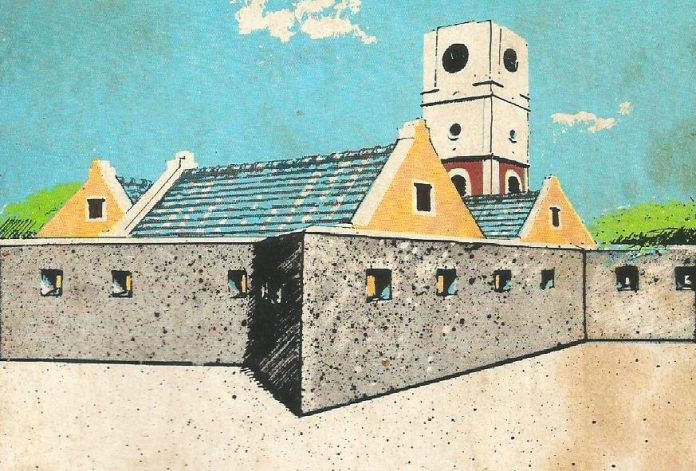Uncover Aruba`s insights through Etnia Nativa
Article by Etnia Nativa call us 592 2702 and book your experience!
Every week, Etnia Nativa writes a new episode concerning culture and heritage, focusing on various aspects of native knowledge, transcendental wisdom, and the importance of upholding cultural identity. Its goal is to educate readers and encourage them to embrace a genuine island state of consciousness. In this segment, Etnia Nativa shares what island fortification meant in those days when invaders were to be repelled from the strategic position of a Fort.
In Oranjestad, the capital city of Aruba, an old fort catches the eye. It is called “Fort Zoutman” or “Fort Saltman” in English. Its external walls are the oldest known buildings on our island. However, the buildings inside the fort were rebuilt in 1974. The Tower named Willem III, located next to it, is the fourth oldest structure in terms of age. It is only surpassed by the Fort itself, the Protestant church on Wilhelminastraat, built in 1864, and the former presbytery of Santa Cruz, constructed in 1863.
Returning to the legendary Fort, it has always been more of a symbol of rural peace in Aruba than malicious intent. This fort is housed in two buildings that originally had nothing in common with each other: Fort Zoutman and Tower Willem III. The fort has been used for a variety of purposes, and it has only seen action on a few occasions. The first time was against a single vessel that wanted to overpower a boat at anchor in the Paardenbaai (Bay of Horses), and the other time was against a troop of soldiers that tried to take the fort from the land side with the objective of dismantling it. Fort Zoutman was, in reality, a place of rest for military men who had nothing better to do with their time. At one time, the Fort served as an experimental garden for aloes. For nearly a hundred years, the police precinct house and the jail were located within the Fort. In olden days, the judge handed down sentences in the Fort, and the civil registrar solemnized marriages there. Goatskins, sheepskins, and postage stamps were stamped there, and citizens also came to pay their taxes there. For years on end, Fort Zoutman served as the storage room of the Department of Public Works, and in the cells of the former jail, coffins were stacked for those who had to be buried as indigents; also, fireworks for New Year’s Eve were stored there.
Until 1930, Fort Zoutman stood on the coast. However, due to the construction of a pier and the dredging of the harbor entrance, the coastline gradually moved further south as a result of landfills. In 1938 and thereafter, additional artificial fill-ups occurred, solidifying the coastline as we know it today. As a consequence of all these changes, Fort Zoutman is no longer located on the coast. The embrasures recessed in the walls, which were once armed with guns during the eighteenth century, now face the government offices rather than the harbor. However, before the coastline was changed, Fort Zoutman was located at a strategic site because its guns had, as their attack zone, the then sole entrance to the Paardenbaai, and its walls were designed to repel an assault from the land area.
Since 1795, the ideals of the French Revolution, “liberty, equality, and fraternity”, have reached the ABC islands, where they found immediate acceptance. Under the command of Tula, a rebellion broke out in Curaçao. Due to the Franco-Dutch alliance, the director of Curaçao, Johannes de Veer, resigned from his position, and French warships entered the port of Curaçao, establishing the “Comite Militaire”, which would be in charge of defense since the Netherlands had gone to war with England. One of the first measures taken by the Military Committee was the protection of the ports of the three islands, leading to the construction of Fort Republiek (currently Fort Nassau) in Curaçao, Fort Zoutman (and West Fort, now completely gone in Oranjestad), and presumably the fort on Bonaire, which received its current name of Fort Orange in 1816.
If you have a keen interest in exploring Aruba’s heritage, Etnia Nativa`s live experience is highly recommended. The owner’s firsthand explanations and insights set Etnia Nativa apart from the rest. A personal touch that adds depth and authenticity to the experience, allowing visitors to forge a meaningful connection with the island’s history, engage valuable insights, and gain a more profound understanding of Aruba’s cultural traditions.
Visits are only by appointment, ensuring a personalized and immersive experience.
Contact: etnianativa03@gmail.com or WhatsApp (messages only) at +297 592 2702.




















